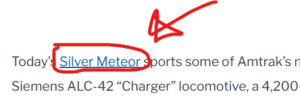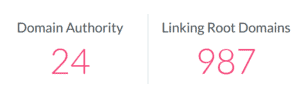Understanding the Relationship Between Site Linking and SEO
Does linking all my sites help SEO? The question of whether linking multiple websites together helps with SEO performance is complex and nuanced. While internal linking has long been a cornerstone of effective SEO strategy, the practice of cross-linking between multiple owned websites requires careful consideration and strategic implementation. In this comprehensive guide, we’ll explore the benefits, risks, and best practices of linking between multiple websites under your control.
The Potential Benefits of Cross-Linking Websites
Cross-linking between websites can offer several advantages when implemented correctly. At its core, linking helps search engines understand the relationship between different web properties and can facilitate the flow of link equity. When you own multiple relevant websites, creating legitimate connections between them can help search engines discover and index your content more efficiently.
Furthermore, cross-linking can help establish topical authority across your web properties. If you own several websites in related niches, thoughtful linking can reinforce your expertise in specific subject areas. For instance, if you operate both a cooking blog and a restaurant review website, relevant cross-links can strengthen your overall authority in the culinary space.
The Risks of Excessive Cross-Linking
However, the practice of linking between multiple websites isn’t without its risks. Search engines, particularly Google, have become increasingly sophisticated in detecting artificial linking schemes designed to manipulate search rankings. Aggressive cross-linking between websites can trigger red flags and potentially lead to manual penalties.
One of the primary concerns is the appearance of a private blog network (PBN) or link scheme. If your websites exist primarily to link to each other and boost rankings, rather than provide value to users, you’re likely violating search engine guidelines. Google’s algorithms are designed to identify patterns that suggest manipulative linking practices, and the consequences can be severe.
Best Practices for Cross-Linking Multiple Websites
To ensure your cross-linking strategy benefits rather than harms your SEO efforts, following established best practices is crucial. The key is to prioritize user experience and value above all else.
Relevance is Paramount
The most important factor in cross-linking is relevance. Links between your websites should make sense from a user perspective. If you’re linking from a fitness equipment review site to a blog about personal finance, the connection might seem forced and artificial to both users and search engines. However, linking from a fitness equipment site to a workout routine blog would be natural and valuable.
Quality Over Quantity
When it comes to cross-linking, less is often more. Rather than creating numerous links between your websites, focus on establishing a few high-quality, contextually relevant connections. Each link should serve a clear purpose and provide value to your visitors. Consider whether the link enhances the user experience or simply exists for SEO purposes.

Natural Link Placement
The placement of cross-links should feel organic within your content. Avoid forcing links where they don’t belong or creating dedicated sections solely for cross-promotion. Instead, integrate links naturally within relevant content where they add value to the discussion or provide additional information that users might find helpful.
Technical Considerations for Cross-Linking
Understanding the technical aspects of cross-linking is essential for implementing an effective strategy. Several factors require careful consideration to ensure your linking practices benefit rather than harm your SEO efforts.
Link Attributes and Their Impact
The way you implement links technically can significantly impact their SEO value. Consider using appropriate link attributes when necessary:
nofollow: When linking between sites where you want to disclose the relationship but not pass link equity sponsored: For any paid or affiliate relationships between sites ugc: For user-generated content links
Site Architecture and Link Distribution
Pay attention to how links are distributed across your websites. A natural linking pattern typically includes links to and from various pages, not just homepages. Consider creating deep links to relevant internal pages when appropriate, as this can provide more value to users and appear more natural to search engines.
Monitoring and Measuring Cross-Linking Impact
To ensure your cross-linking strategy is effective, implement robust monitoring and measurement practices. Regular analysis of your linking structure and its impact on SEO performance is crucial for long-term success.
Key Metrics to Track
Monitor changes in organic search traffic, rankings, and user behavior metrics across all linked websites. Pay particular attention to how traffic flows between your properties and whether cross-links are actually being clicked by users. High bounce rates or low engagement with cross-linked content might indicate that your linking strategy needs refinement.
Regular Audit and Optimization
Conduct regular audits of your cross-linking structure to ensure all links remain relevant and valuable. Remove or update outdated links, and look for opportunities to add new, meaningful connections as your websites evolve. Keep detailed documentation of your linking strategy to help identify patterns and optimize your approach over time.
Alternative Strategies to Consider
While cross-linking can be beneficial when done correctly, it shouldn’t be your only strategy for improving SEO performance. Consider these alternative approaches that can complement your linking strategy:
Content Collaboration
Instead of directly linking between sites, create collaborative content that naturally warrants cross-promotion. This might include joint research projects, industry studies, or complementary content that serves your various audiences.
Diverse Link Building
Focus on building diverse link profiles for each website independently. This includes earning links from other relevant websites in your industry, creating valuable content that naturally attracts links, and engaging in legitimate outreach activities.

The Future of Cross-Linking and SEO
As search engines continue to evolve, the impact of cross-linking on SEO will likely change as well. Staying informed about industry trends and search engine guidelines is crucial for maintaining an effective strategy.
A Balanced Approach to Cross-Linking
The question of whether linking all your sites helps SEO doesn’t have a simple yes or no answer. When implemented thoughtfully and strategically, cross-linking can provide value to both users and search engines. However, the key to success lies in maintaining a balanced approach that prioritizes user experience and natural relevance over artificial link building.
Remember that cross-linking should be just one component of a comprehensive SEO strategy. Focus on creating high-quality content, providing genuine value to your users, and building authority naturally in your respective niches. When cross-linking fits naturally within this broader strategy, it can contribute positively to your overall SEO efforts.
The most successful cross-linking strategies are those that would make sense even if search engines didn’t exist. If your links provide genuine value to users, help them discover related content they’re interested in, and enhance their overall experience, you’re likely on the right track. Always prioritize your users’ needs over search engine considerations, and let that guide your cross-linking decisions.
